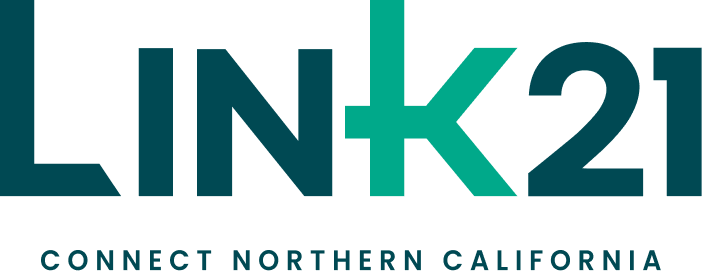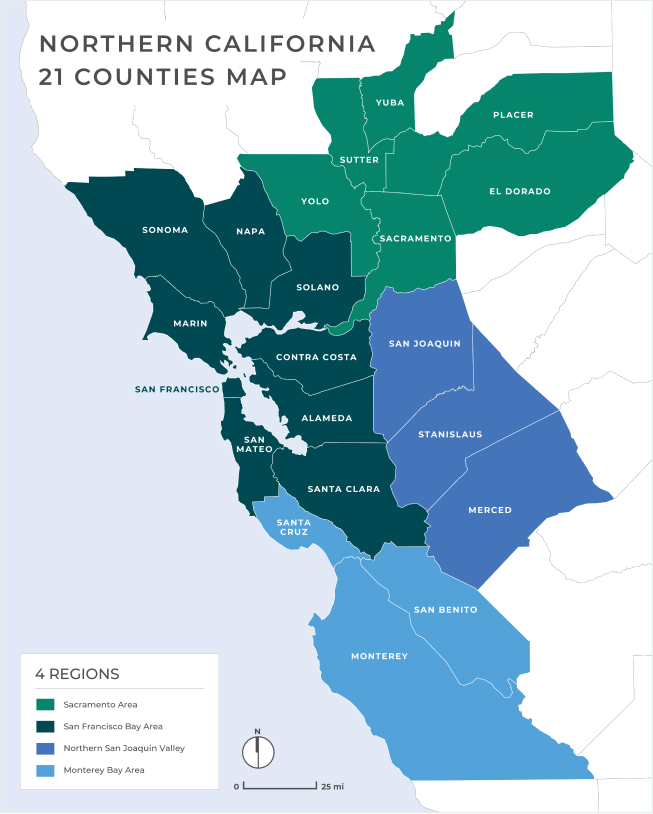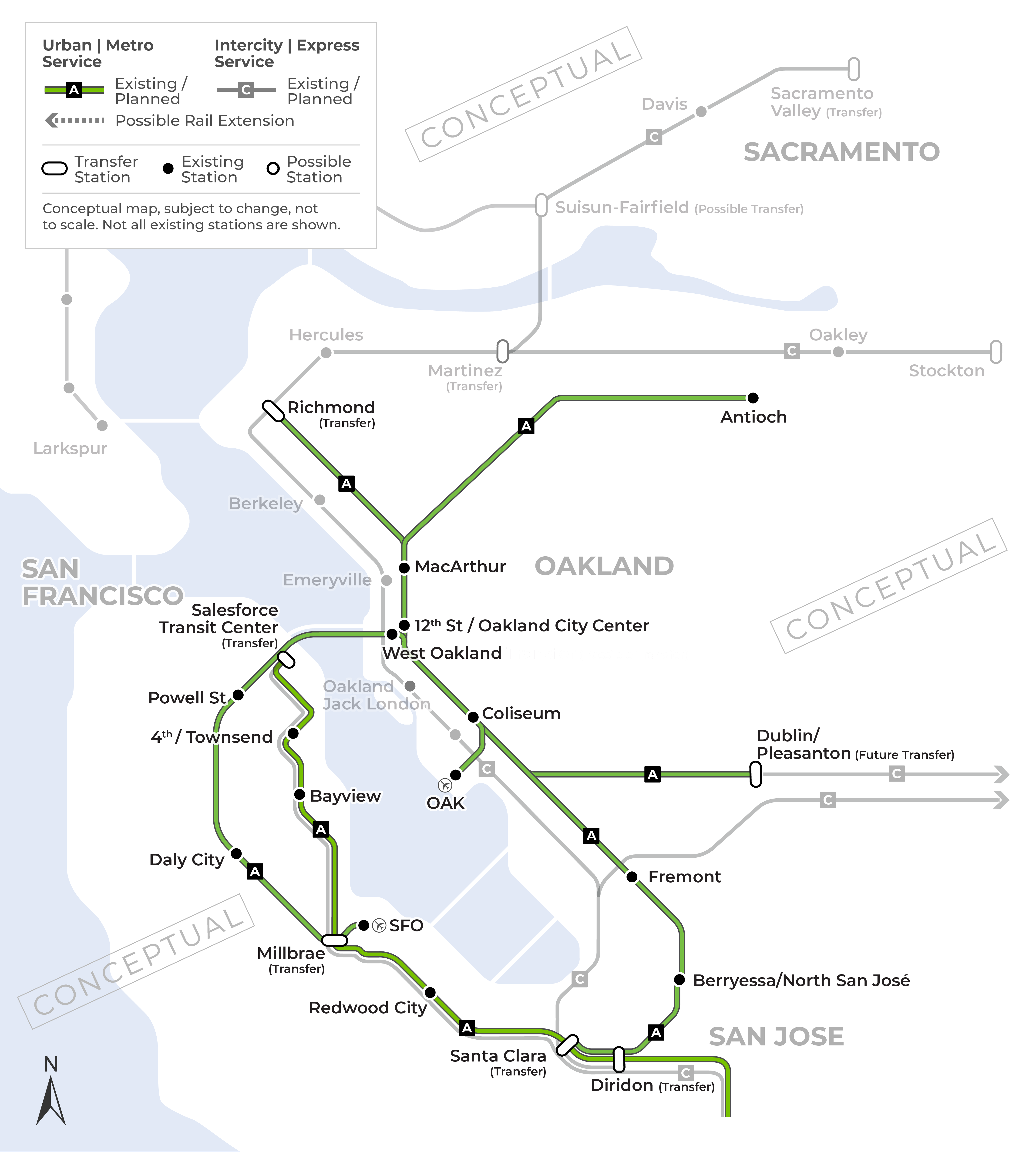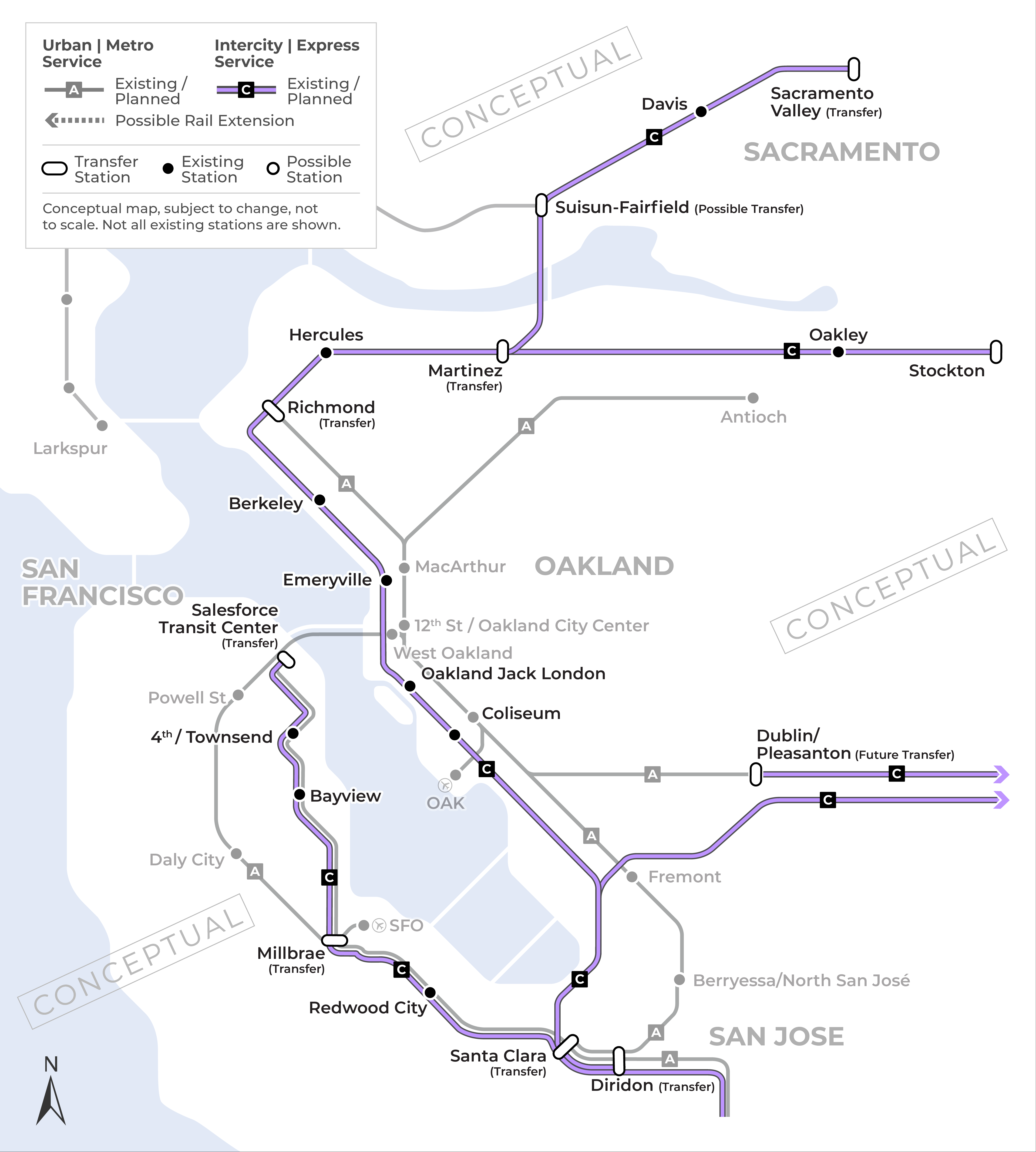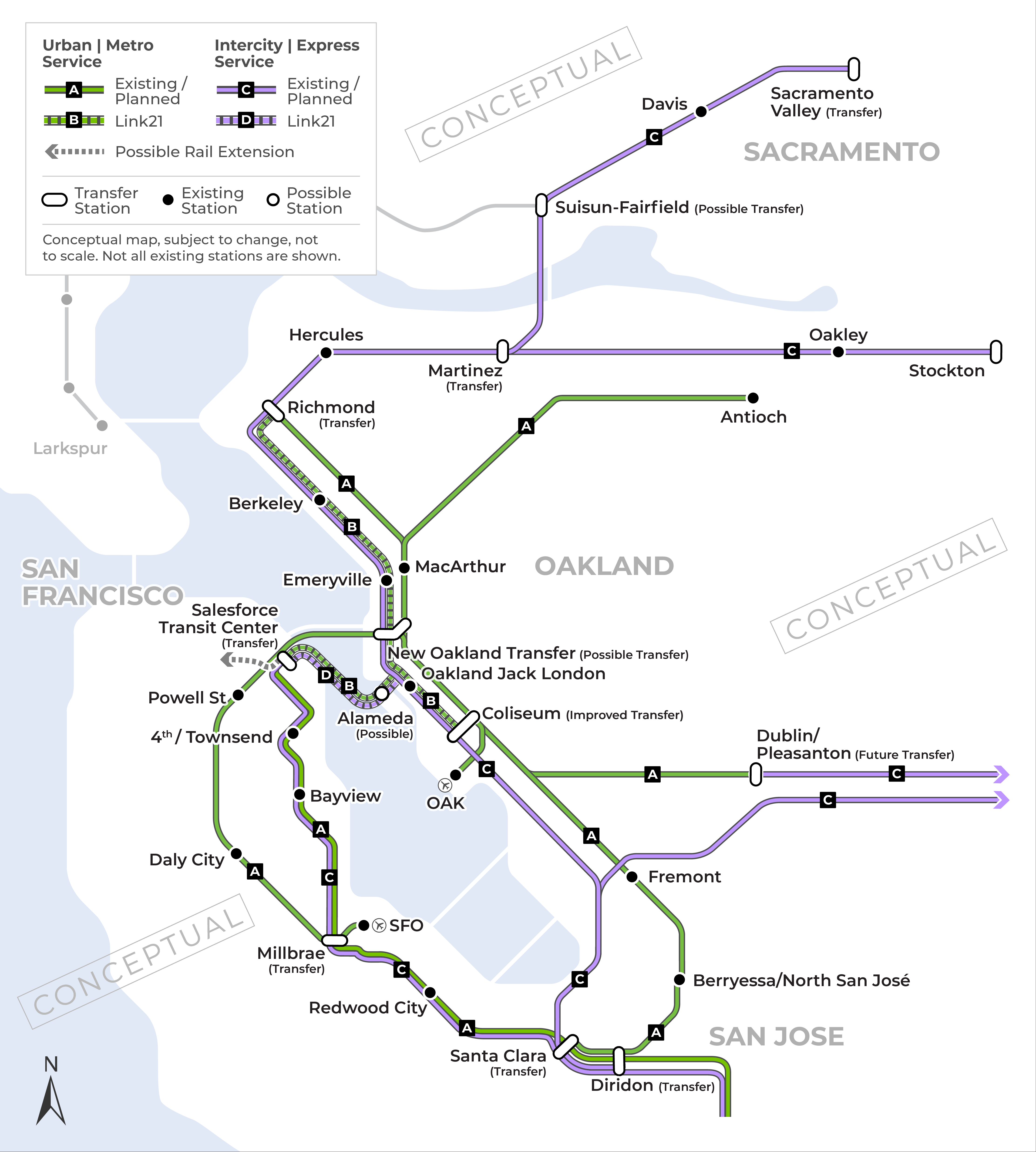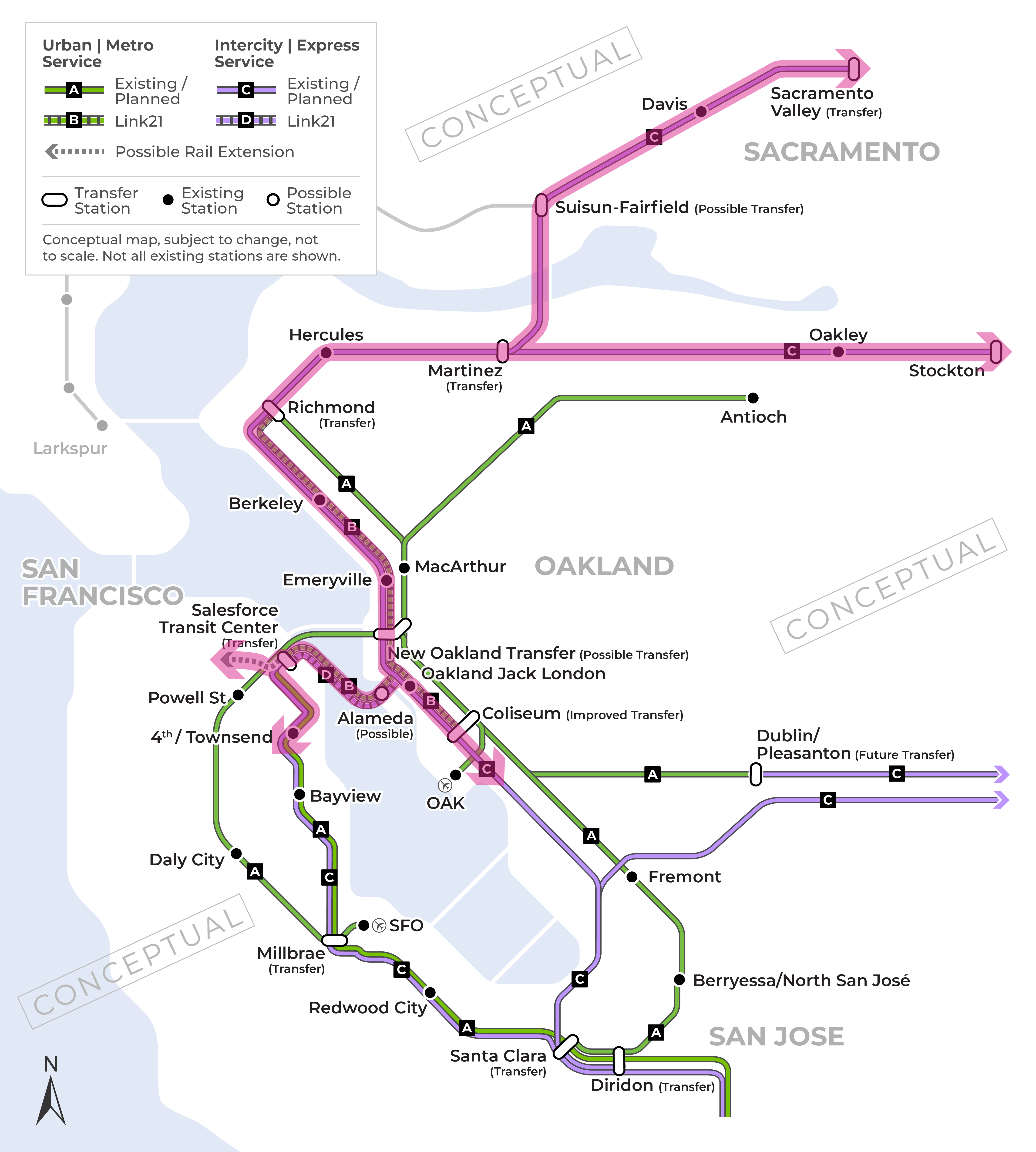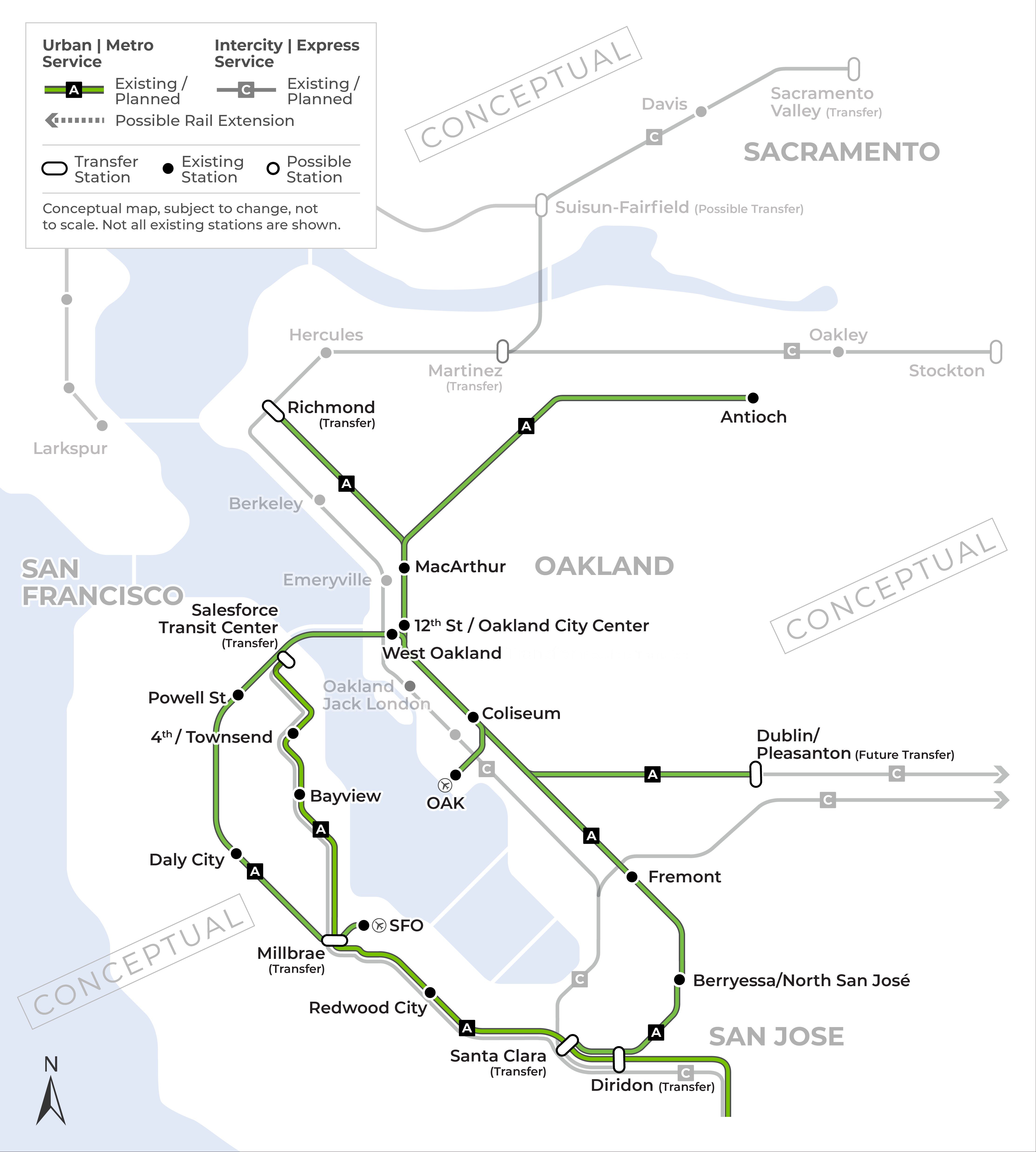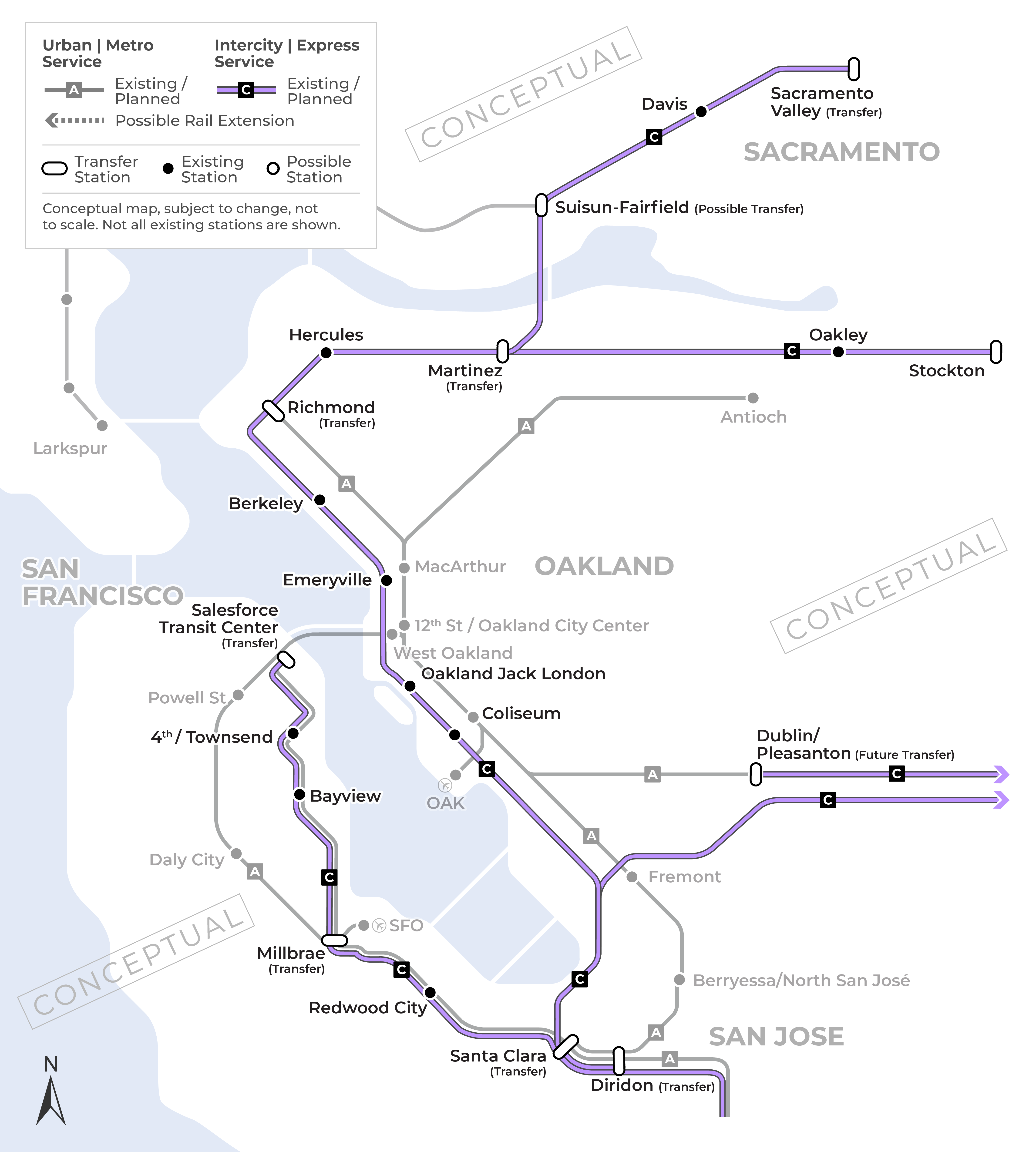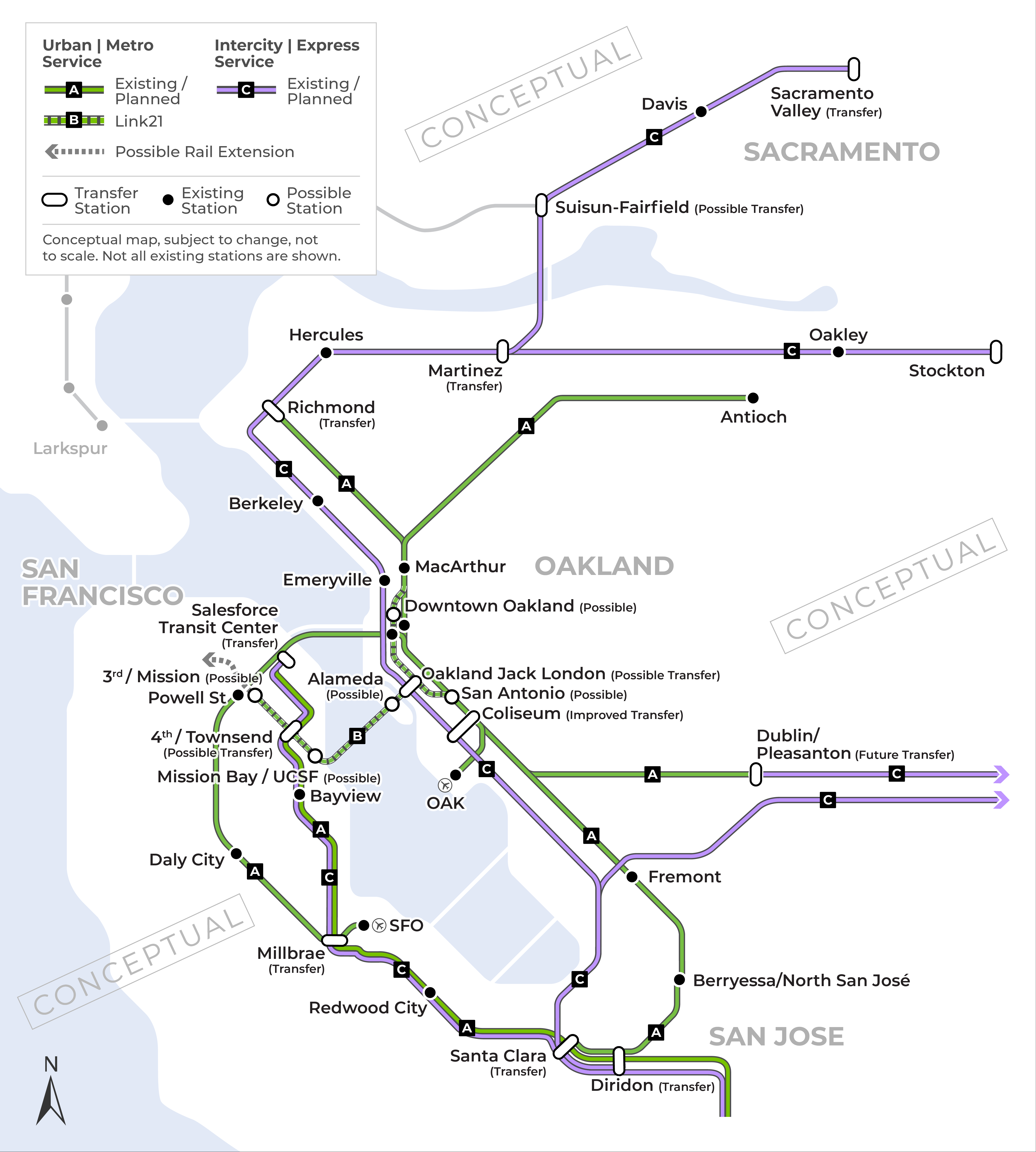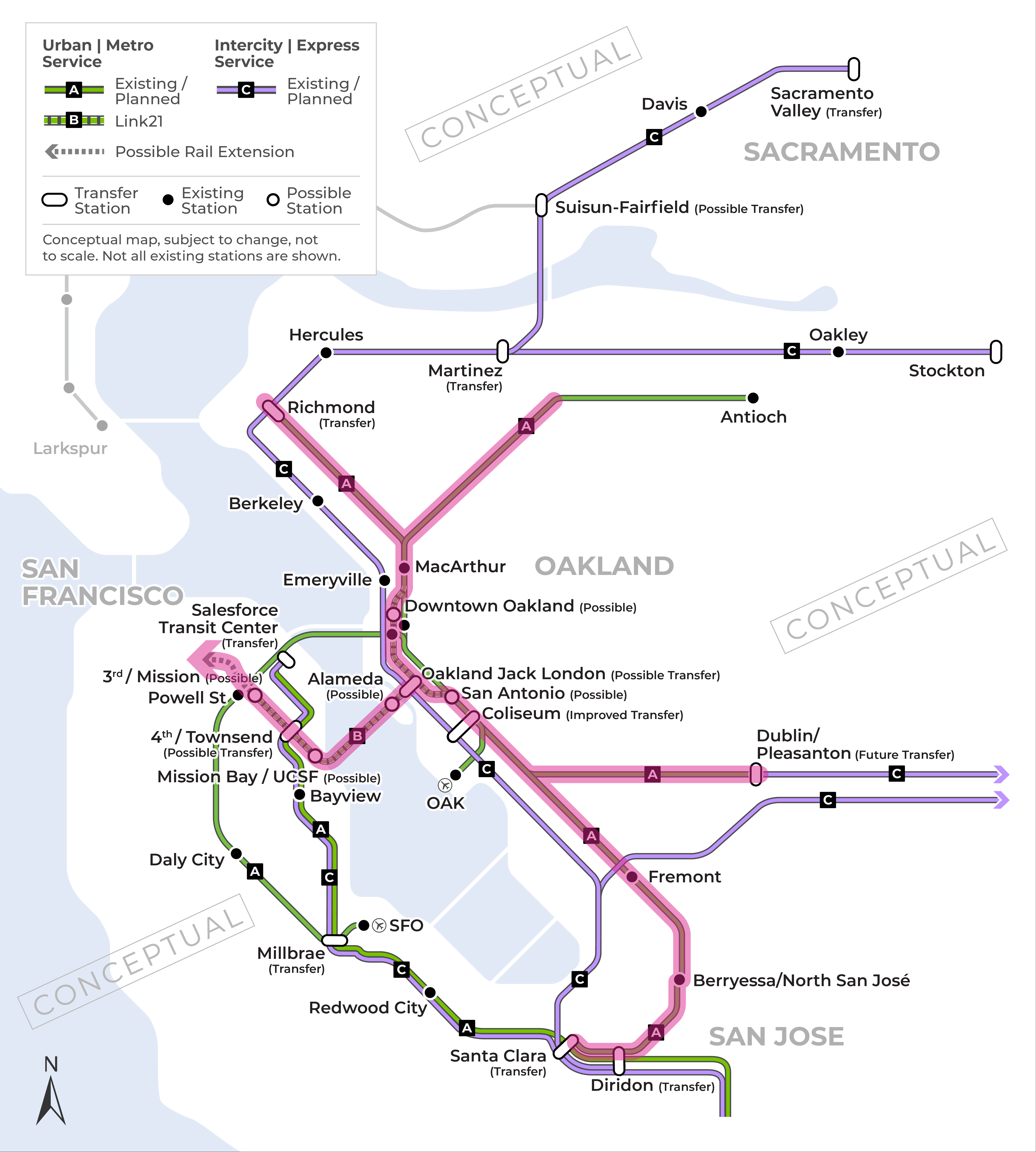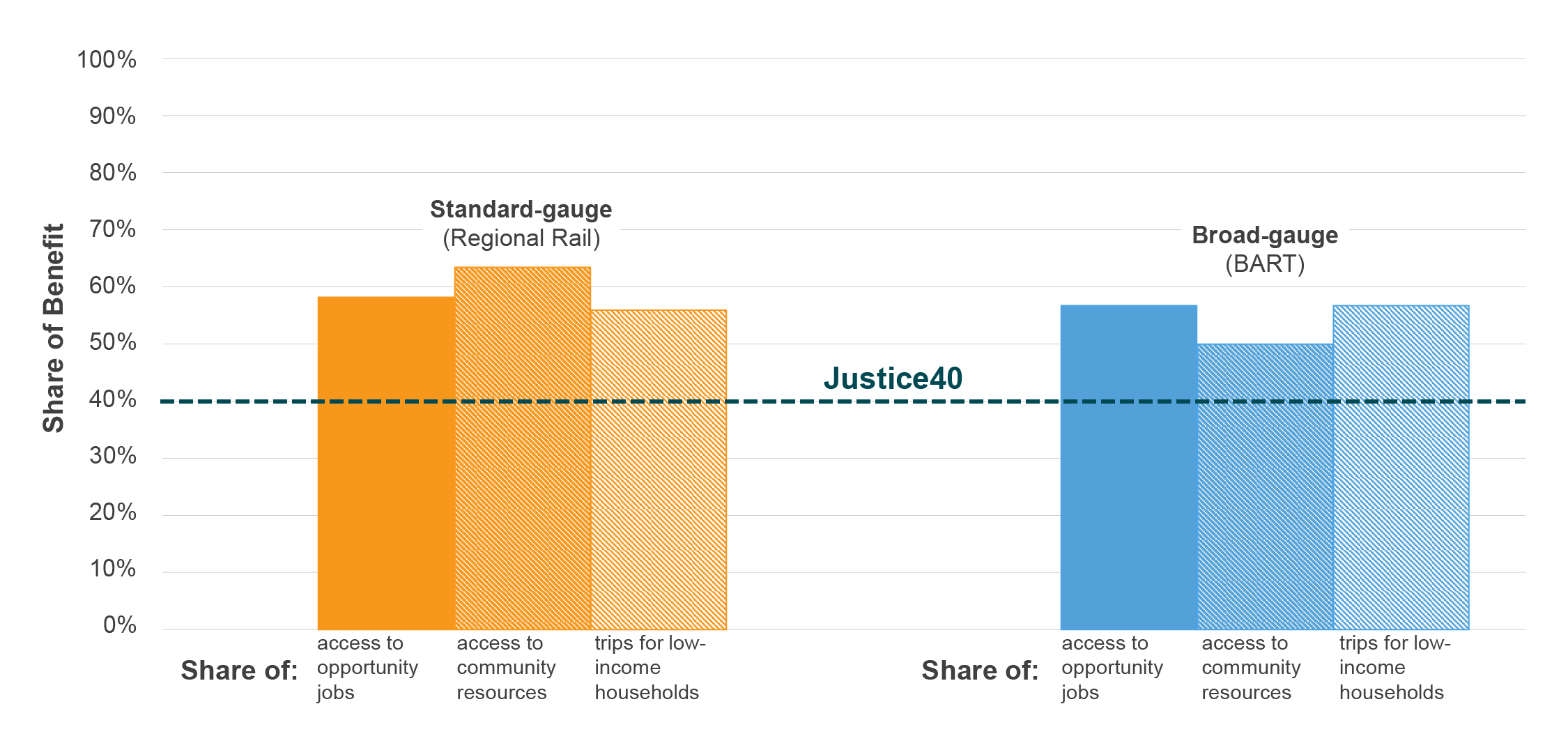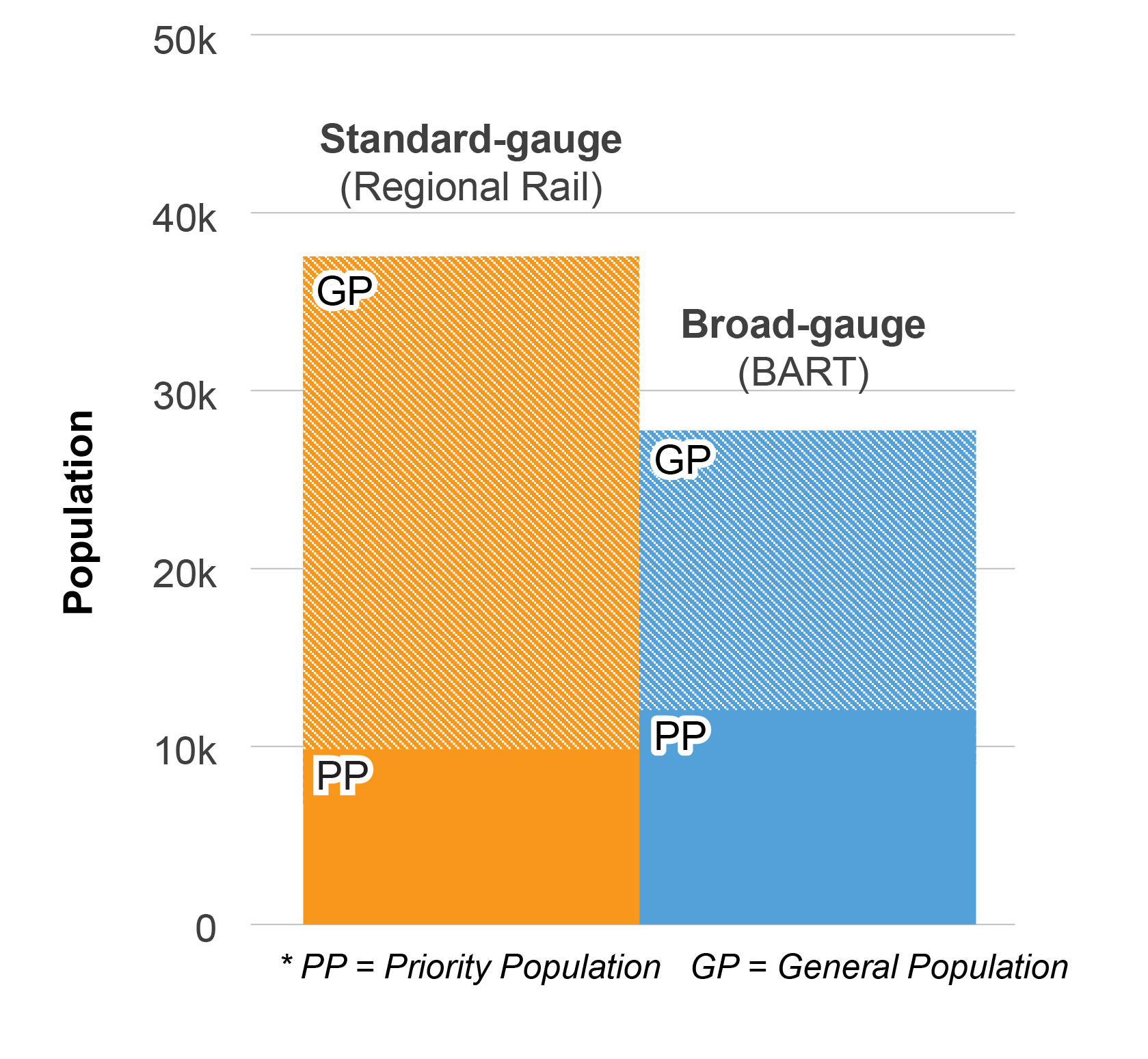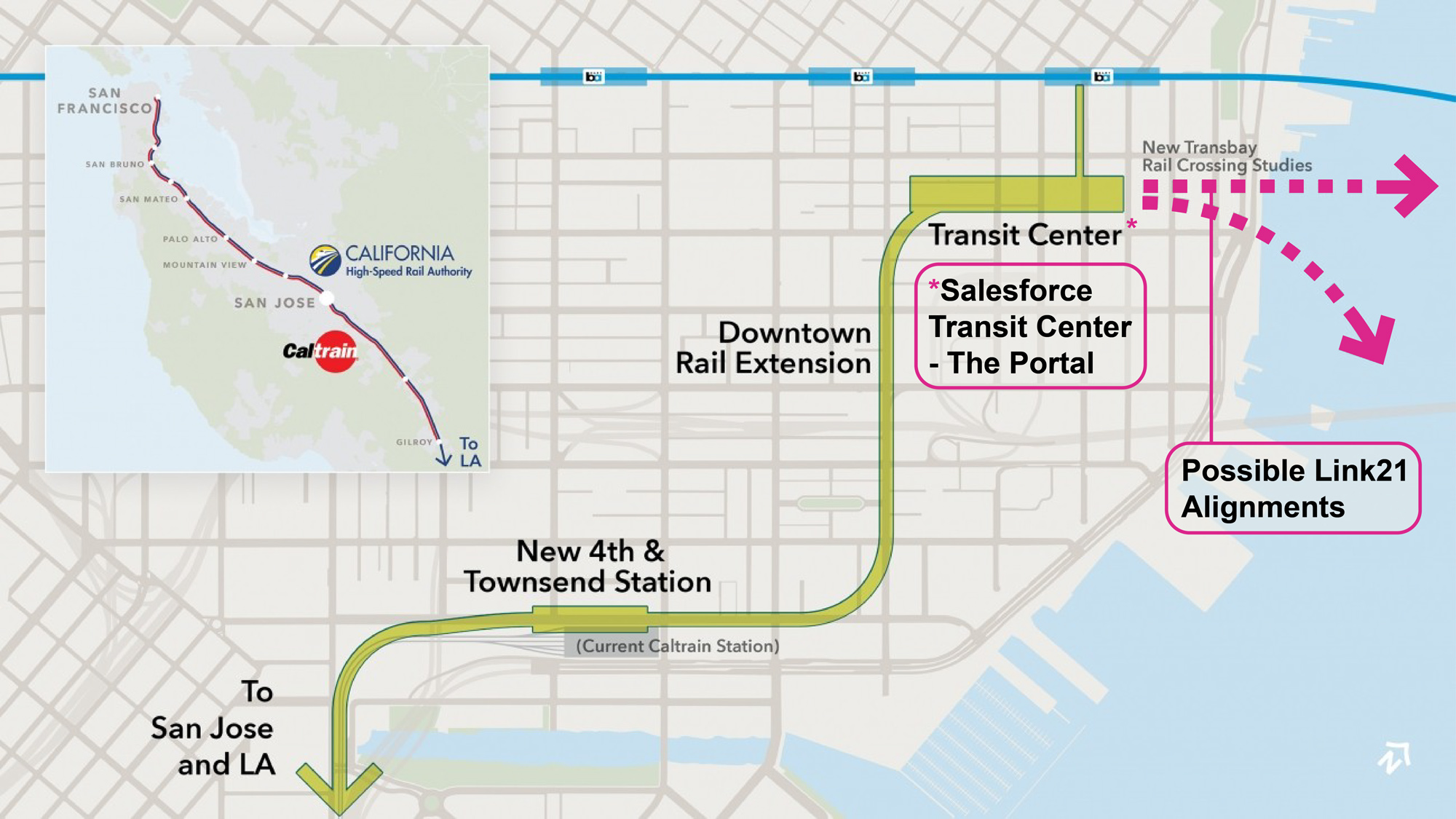What is Link21?
Link21 is a transformational train infrastructure improvement program that aims to enhance Northern California's quality of life for generations to come. At its core, Link21 will construct a second train crossing between San Francisco and Oakland as envisioned in the California State Rail Plan. In addition to a new crossing in the Transbay corridor — currently one of the most congested corridors in Northern California — Link21 will also include improvements to both San Francisco Bay Area Rapid Transit District (BART) and Regional Rail train systems.
California State Rail Plan Vision
California's economic, environmental, and equity goals demand a fully integrated, zero-emission, modern passenger and freight rail network that connects seamlessly with transit to safely and reliably deliver more service to more destinations more often and attract significant demand away from highway and air travel.*
Link21 is critical to achieving this vision, as identified in 2018 by the state of California and made public in the 2023 Draft State Rail Plan.
*Source: 2023 California State Rail PlanSolutions for a Better Future
The Link21 Program is reimagining a better future for our Megaregion. Alongside partner agencies, we are trying to find solutions for the challenges we face today. To do that, we need to understand current conditions, consider lessons learned, and work to accommodate an uncertain future. Ultimately, we want to better connect affordable housing to desired destinations and identify transportation solutions that preserve our quality of life.
Economy, Jobs & Housing
The 21-county Northern California Megaregion is the fifth largest megaregional economy in the country. Residents experience a high cost of living that has resulted in relocation further from jobs and schools in search of affordable housing. The population of the 21-county Megaregion is expected to grow — reaching nearly 13.7M by 2050 and 14M by 2060.* Link21 seeks to advance equity by providing improved access and affordable transit options with convenient connections to megaregional destinations. Specifically, Link21 is partnering with priority populations, low-income communities, and those who rely on transit for essential mobility to identify needed transportation improvements that provide equitable benefits to those who need it most, and to avoid further harms.
Roadway Congestion & Climate Risks
The imbalance between jobs and affordable housing has caused Californians to travel longer distances, resulting in persistent traffic and travel delays on local roads and freeways. Many freeways are back to pre-pandemic congestion levels, causing long travel delays and unpredictable travel times. Transportation is a major contributor to pollution and climate-change so we must look for cleaner travel solutions. Link21 will use zero-emission, modern train technology to offer reliable, high-capacity transport options that will reduce vehicles on the road and help meet regional air quality goals while protecting the health of future generations.
Passenger Rail Service & Infrastructure
While our train network is extensive, service can be disconnected and limited, sometimes making train travel inconvenient or an impractical option. Additionally, having only one Transbay train crossing (BART tube) between San Francisco and Oakland limits service reliability and redundancy for riders when the tube is out of service, and during evenings when daily maintenance occurs. By better connecting the train network, Link21 will build ridership in existing and new markets, shift travel from cars to trains, help spur post-pandemic recovery, and even benefit those who don't ride the train today.
*Source: State of California Department of Finance Westbound Interstate 80 entering Bay Bridge from Oakland/Emeryville to San Francisco
Westbound Interstate 80 entering Bay Bridge from Oakland/Emeryville to San Francisco
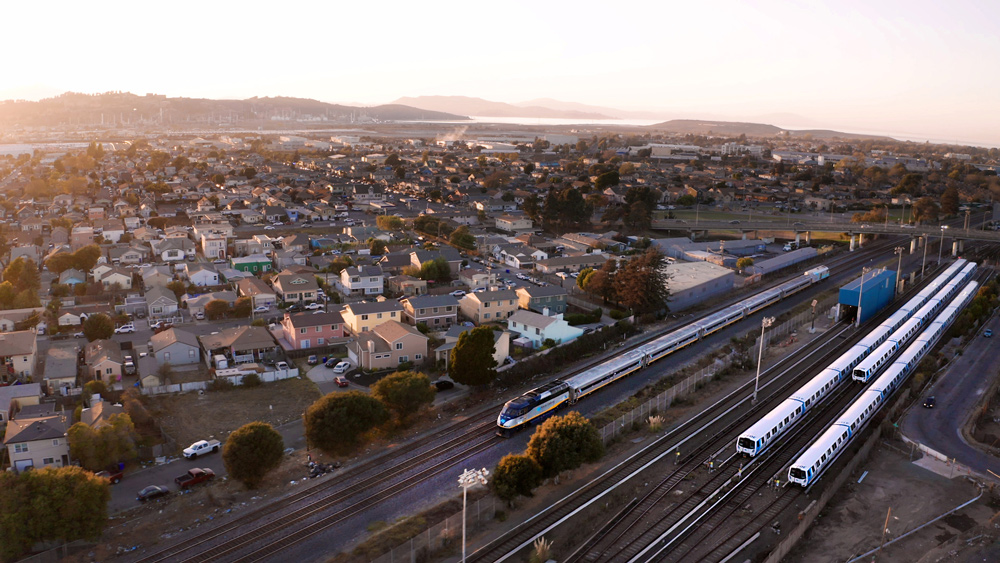 Link21 will create better connections between Northern California's Regional Rail and BART services
Link21 will create better connections between Northern California's Regional Rail and BART services
Link21 Program Goals
Early community and stakeholder engagement helped to shape the Link21 goals and objectives, which drive the Program’s planning work. Click below to explore our goals and objectives that support identification, development, and evaluation of megaregional rail benefits.
Goals & Objectives
Click or tap the items below to learn more.
- Provide better service
- Improve reliability and system performance
- Build ridership and mode share
- Connect people and places
- Improve safety, health, and air quality
- Advance equity and community stability
- Improve access to opportunity and employment
- Connect major economic, research, and education centers
- Enable transit-supportive and equitable land use
- Increase climate change resilience
- Reduce greenhouse gas emissions
- Conserve resources
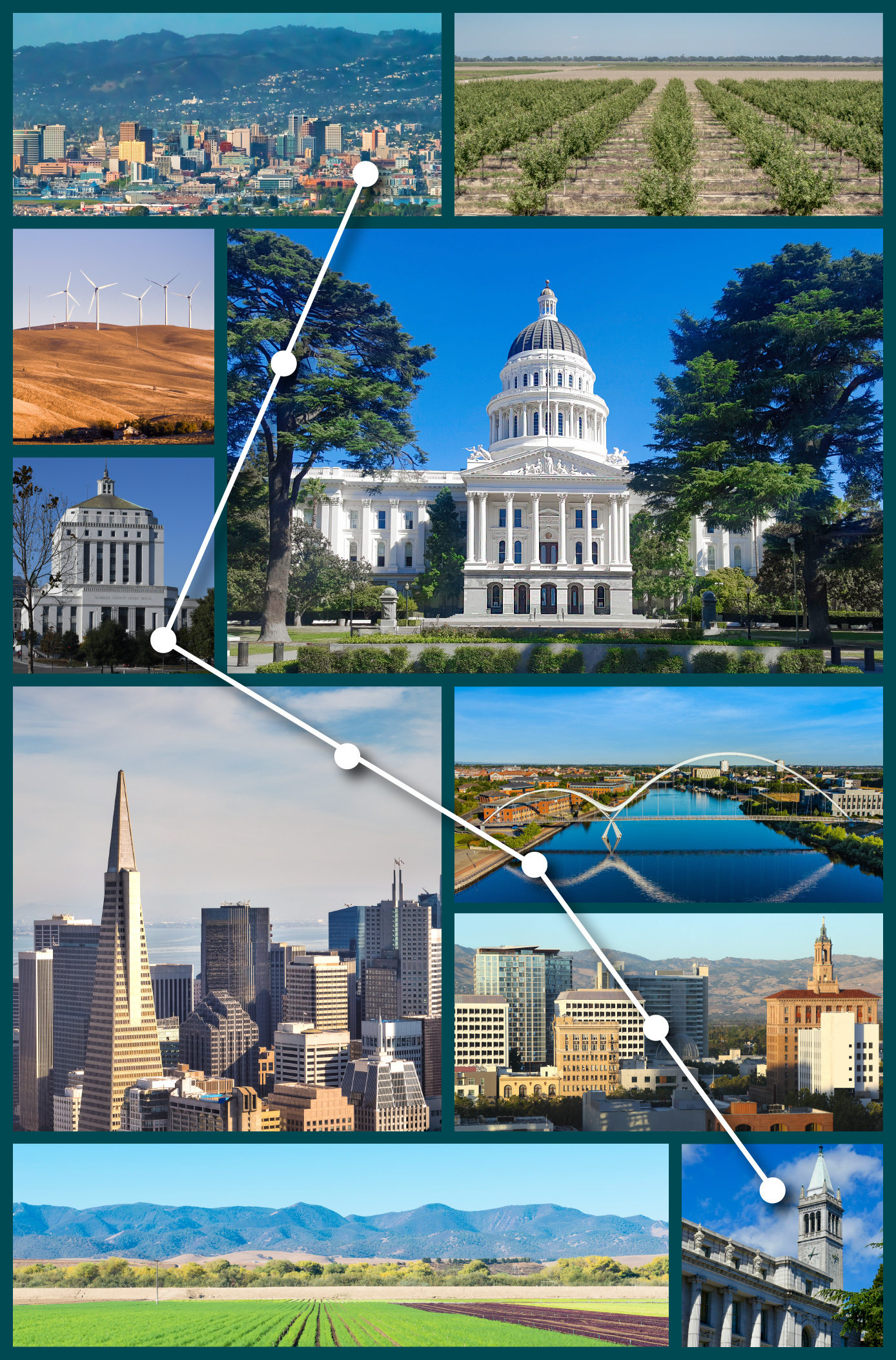
Commitment to Equity & Engagement
To advance equity in the Megaregion — so that all people, regardless of their background have the same opportunity to live happy and healthy lives — the Program is planning and developing rail infrastructure solutions differently than the past. In alignment with the Justice40 Initiative, equity is embedded within the technical work and drive the engagement of diverse communities so that solutions are developed with our community partners at each step of the way.
Equity Integrated into Planning and Analysis
From initial Program framework development, to establishing the Business Case and exploring concepts, equity is a critical component of the technical work and has influenced the following:
- Equity Vision Statement and Blueprint
- Goals and Objectives
- Defining Priority Populations
- Business Case Evaluation Metrics
- Identification of Concepts for Exploration
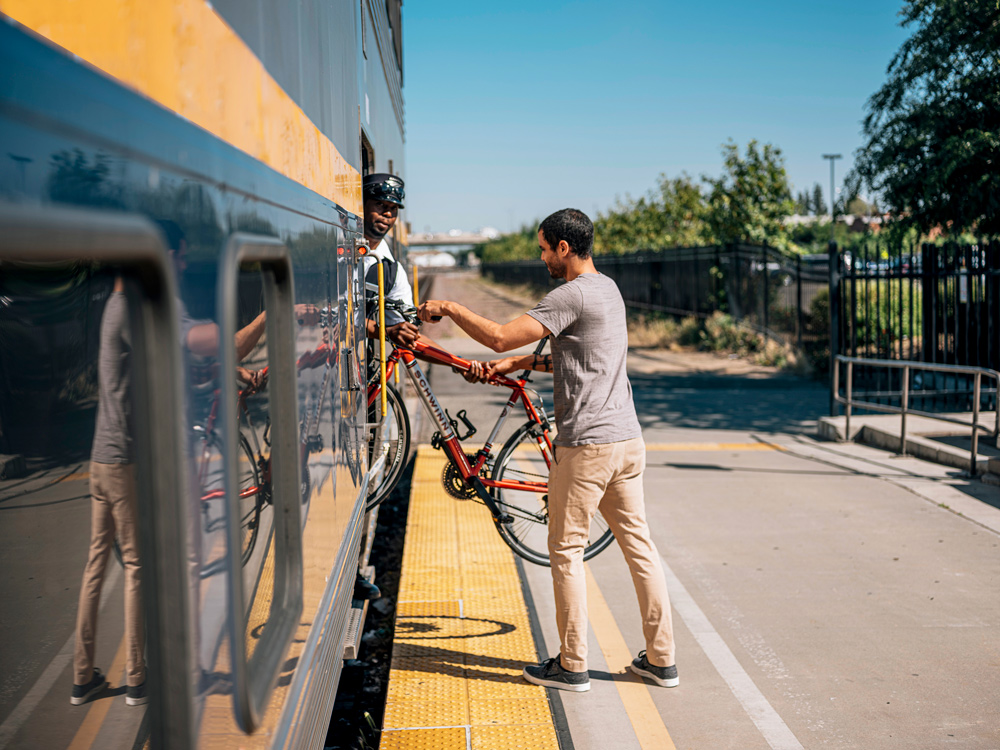 Conductor assists rider with loading bike onto train
Conductor assists rider with loading bike onto train
Equitable Engagement Implemented Through Multi-Faceted Approach
We proactively create opportunity for information exchange, convenient participation, and input through direct and accessible engagement and outreach activities. Since March 2022, we have hosted and/or participated in over 350 events directly connecting with over 11,700 community members and agency partners.
Equity Advisory Council (EAC)
The 18 community members that represent the EAC are utilizing their lived experiences to provide invaluable input that is helping to shape Link21's planning. The EAC provides a space for meaningful community collaboration on targeted topics such as accessibility, anti-displacement, connecting transit, fares, community benefits, equity metrics, etc.
-
 25+
Meetings, office hours and working group meetings
25+
Meetings, office hours and working group meetings
Agency Stakeholder Partnerships
-
 185+
Briefings, presentations and collaboration workshops with transportation, transit and advocate agencies
185+
Briefings, presentations and collaboration workshops with transportation, transit and advocate agencies
Community Stakeholder Partnerships
-
 165+
General public and targeted community events (in-person, virtual, online)
165+
General public and targeted community events (in-person, virtual, online)
Public Education & Outreach
-
 7.18K+
Link21 website visits
7.18K+
Link21 website visits
-
 6.5M+
Digital impressions
6.5M+
Digital impressions
-
 34,295+
Link21 subscribers
34,295+
Link21 subscribers
-
 3,700+
Survey responses through 15 surveys
3,700+
Survey responses through 15 surveys
-
 3,695+
Online open house visits
3,695+
Online open house visits
-
 1,735+
Comments submitted
1,735+
Comments submitted
-
 40+
Electronic notifications
40+
Electronic notifications
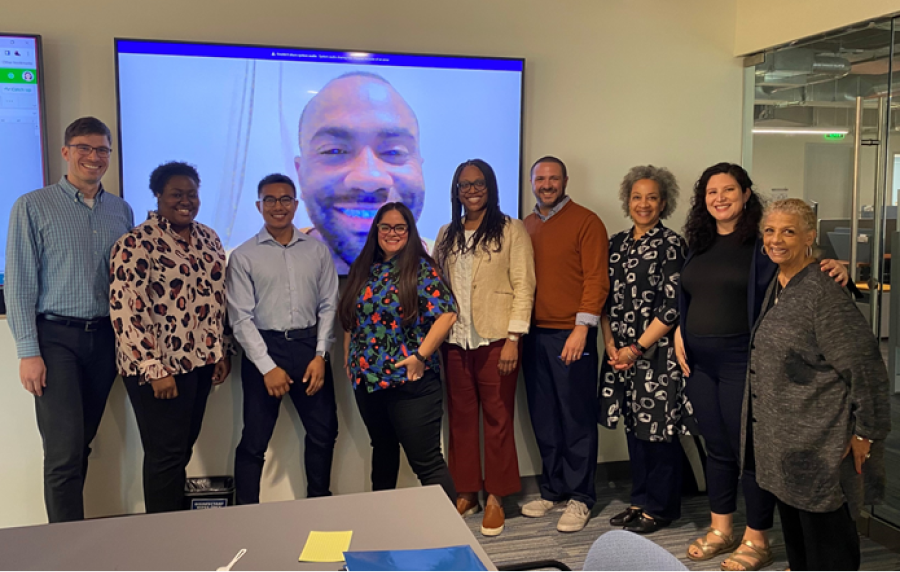 Link21 Equity Advisory Council selection committee meeting at BART in November 2022
Link21 Equity Advisory Council selection committee meeting at BART in November 2022
Think about a connected network as an equity strategy — EAC Member
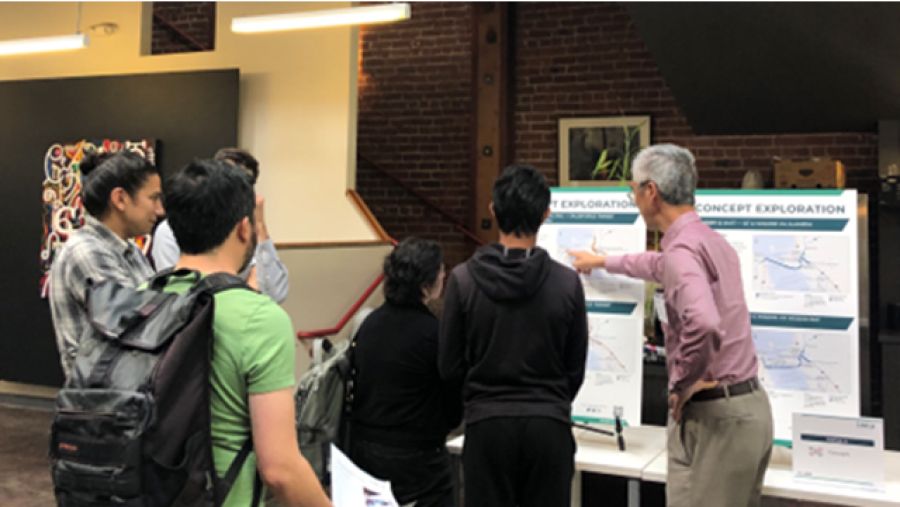 Link21 Team engaging with community members at Oakland Link21 Open House
Link21 Team engaging with community members at Oakland Link21 Open House
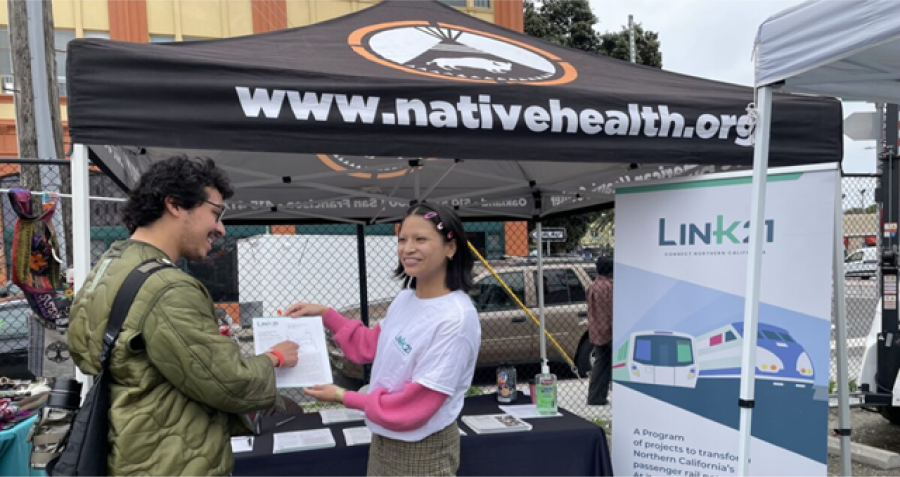 Link21 Team engaging with community members at the Indigenous Red Market
Link21 Team engaging with community members at the Indigenous Red Market
What We've Heard
Active listening and input collection is critical to engaging with megaregional agency partners, policy and community leaders, advocates and the public. We have collected hundreds of comments over the last two years through the Program website, email, events, facilitated question-and-answer sessions, surveys and opinion research. A number of resounding themes have risen to the surface, which you can explore below.
Common Themes from All Audiences
- Faster, convenient and direct megaregional connections between the San Francisco Peninsula, the East Bay, and Sacramento
- Improved reliability and greater frequency of service
- Increased late night and weekend service
- Bicycle and pedestrian facilities at stations to reduce personal vehicle usage
- Improved safety, security, and ADA accessibility
- Minimized displacement/gentrification
- Fare equity and affordability
Public Opinion Research from Fall 2023
As part of continued gathering of Link21 public sentiment, the team performed public opinion research by conducting an online survey to 1,255 registered voters across the 21-county Northern California Megaregion — half of which were from outside the nine-county Bay Area. The goal of the research was to collect information on megaregional commute patterns, transportation needs, and overall support for the Link21 Program.
-
General Support
 70% Support Link21
There are high levels of support for continued long-term planning and development.
70% Support Link21
There are high levels of support for continued long-term planning and development.
-
Key Feature Priority
 52% Said
Allowing Peninsula service to extend through San Francisco to Oakland, with faster and more direct trips is very/extremely important.
52% Said
Allowing Peninsula service to extend through San Francisco to Oakland, with faster and more direct trips is very/extremely important.
-
Key Feature Priority
 71% Said
Creating a broader, more-connected rail network and directly linking systems together is very/extremely important.
71% Said
Creating a broader, more-connected rail network and directly linking systems together is very/extremely important.
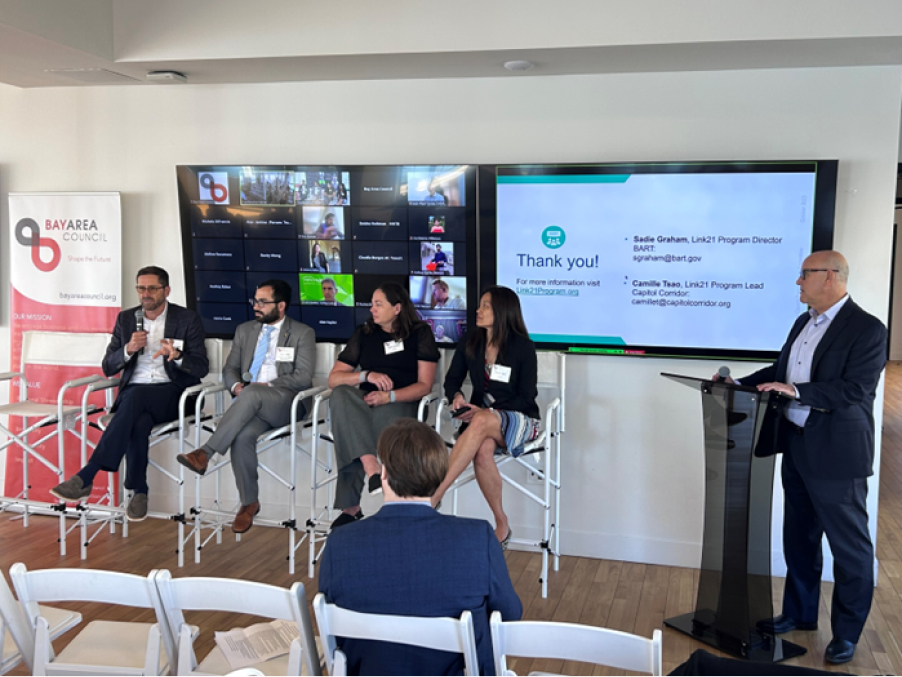 Bay Area Council Transportation Committee: Future of Rail in Bay Area and Beyond event featuring panelists from Link21 in San Francisco
Bay Area Council Transportation Committee: Future of Rail in Bay Area and Beyond event featuring panelists from Link21 in San Francisco
 Community members reviewing Program information at San Francisco Link21 Open House
Community members reviewing Program information at San Francisco Link21 Open House
 Community member asking Link21 Team questions at Oakland Link21 Open House
Community member asking Link21 Team questions at Oakland Link21 Open House
Link21 Nearing a Program Milestone
Since mid-2022, Link21 has been exploring crossing concept options for standard-gauge (Regional Rail) and broad-gauge (BART) train technology. As part of concept development and analysis, work has included such activities as market analysis, early engineering and environmental studies, service planning, ridership modeling, and ongoing agency and community collaboration.
An Important Decision Milestone
Rail concepts have been evaluated and the Link21 Team is assessing the findings to identify which train technology will best meet Link21's Goals and Objectives, and transform our Megaregion with improved service and community connections.
What Is Not Part of the Decision?
There is still work to do to define the Project, including alignments and new station locations, etc. The next steps will focus on planning, with community input, to identify a Project to advance into the next phase of work, Environmental Review.
Why Decide Technology Now?
Our extensive analysis has clarified the benefits of the two crossing technologies, including how they fit within the state rail vision, and tie to regional investments, creating a more connected train system. Determining the train crossing technology allows us to focus resources and competitively position Link21 for unprecedented federal and state funding opportunities.
How We Got Here
The Program team has completed a thorough process of information gathering and assessment to guide this strategic milestone.
Click or tap the tabs below to learn more.
Identified Problem Statement
- Improve megaregional access
- Promote equitable opportunities
- Expand Transbay capacity
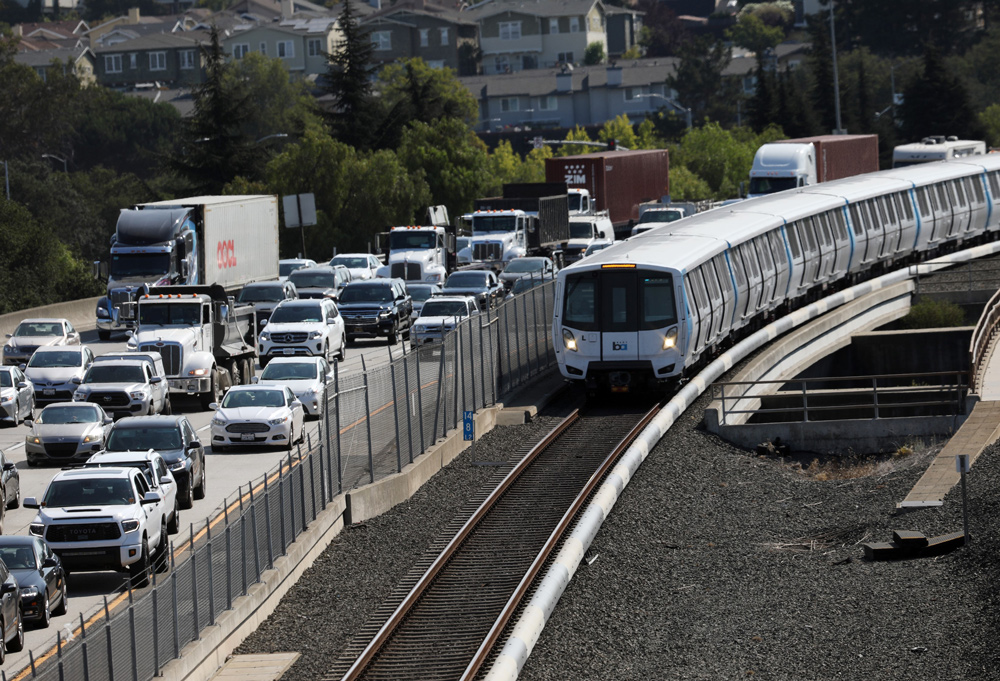
Established Goals & Objectives
- Transform passenger experience
- Promote equity & livability
- Support economic opportunity
- Advance environmental protection
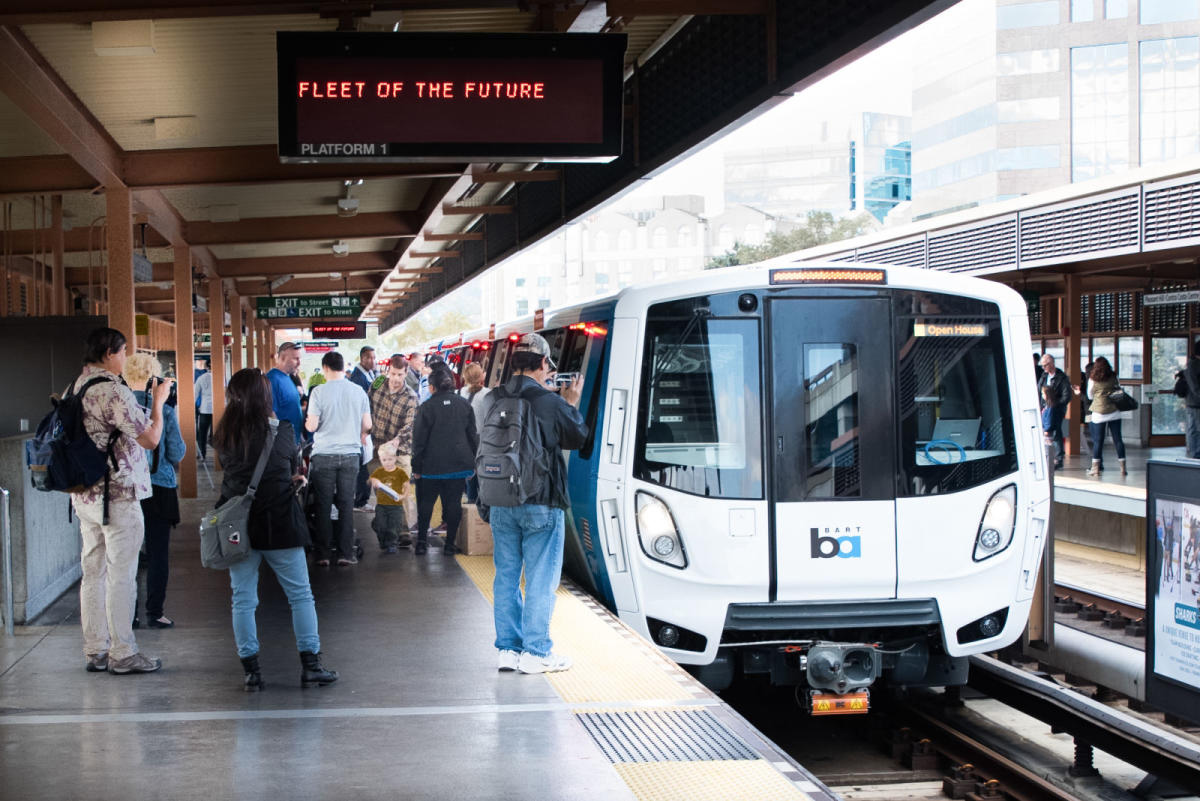
Distinguished Rail Investment Options
- Developed concepts for each rail technology
- Standard-gauge (Regional Rail)
- Broad-gauge (BART)
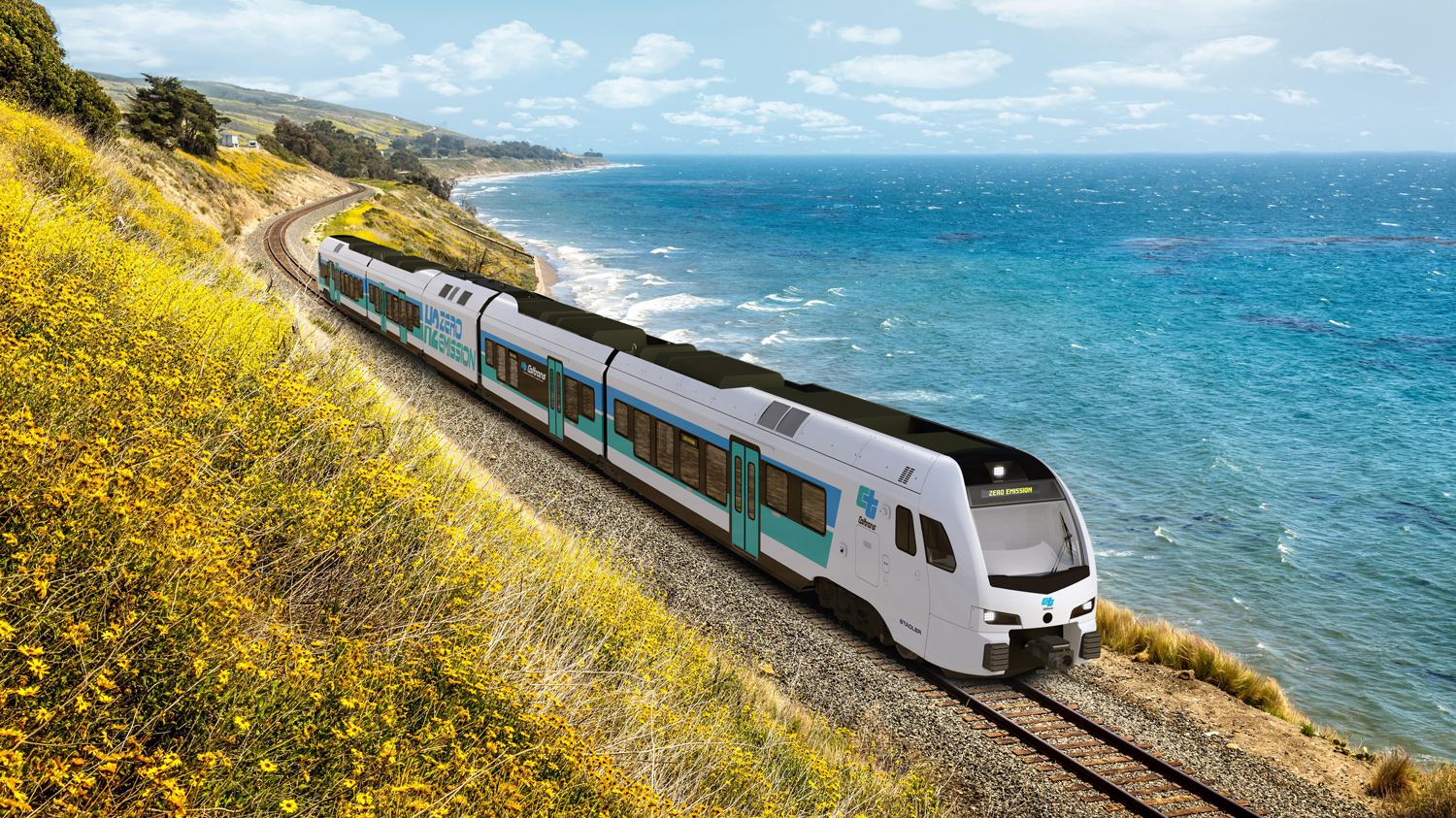
Evaluated & Assessed Improvements Through Business Case Framework
- Early stage assessment = the Strategic Case
- Determined if train technology and service address transportation challenges
- Evaluated how train technology and service advance Link21 goals & objectives

Analyzed Findings
- Train technologies offer different results
- Similarities
- Differences
- Considerations
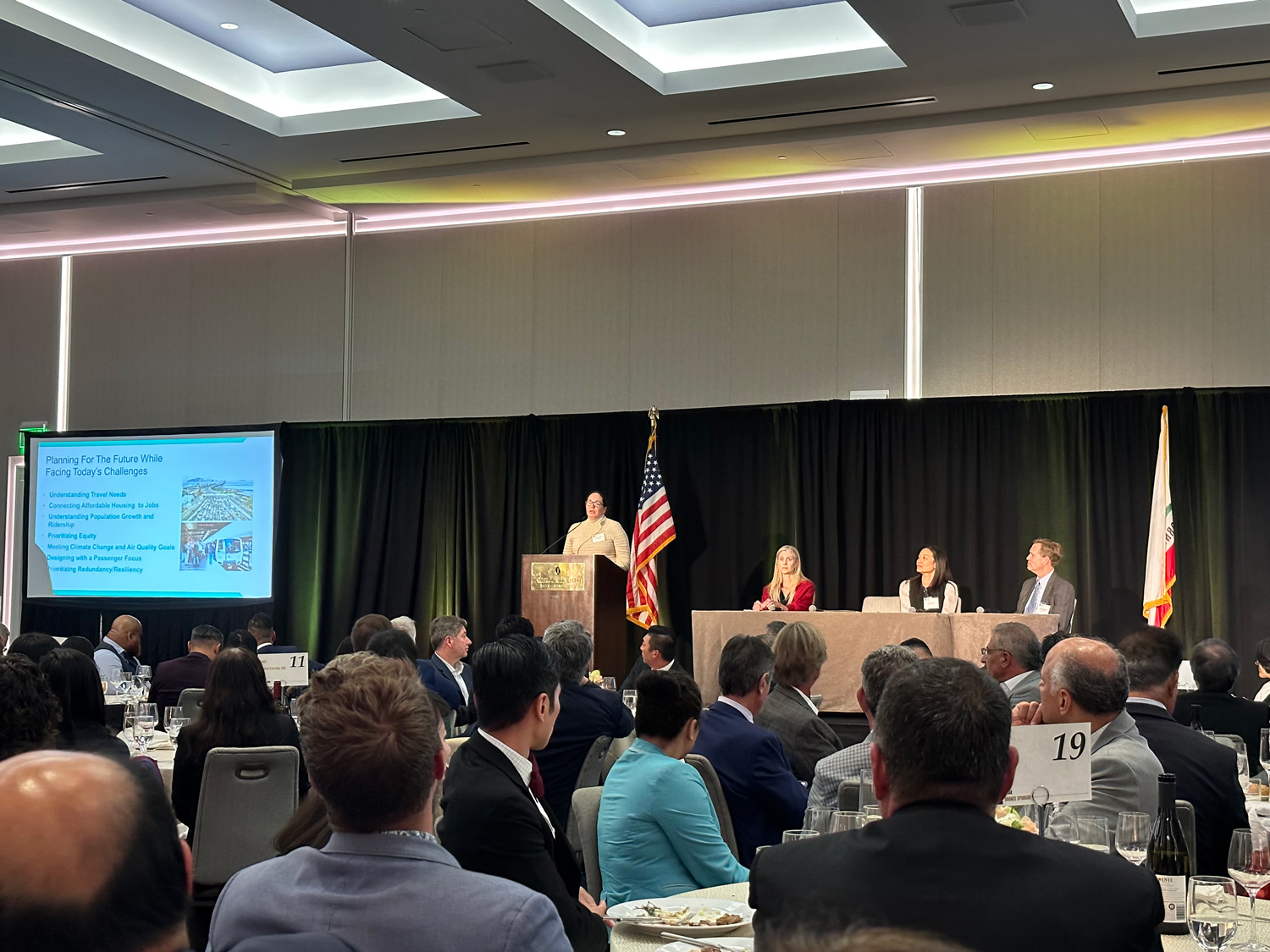
Crossing Train Technology
Which train technology best meets the Program's goals and the future Megaregion's travel needs?
- Choose crossing technology and advance work to further define the Project
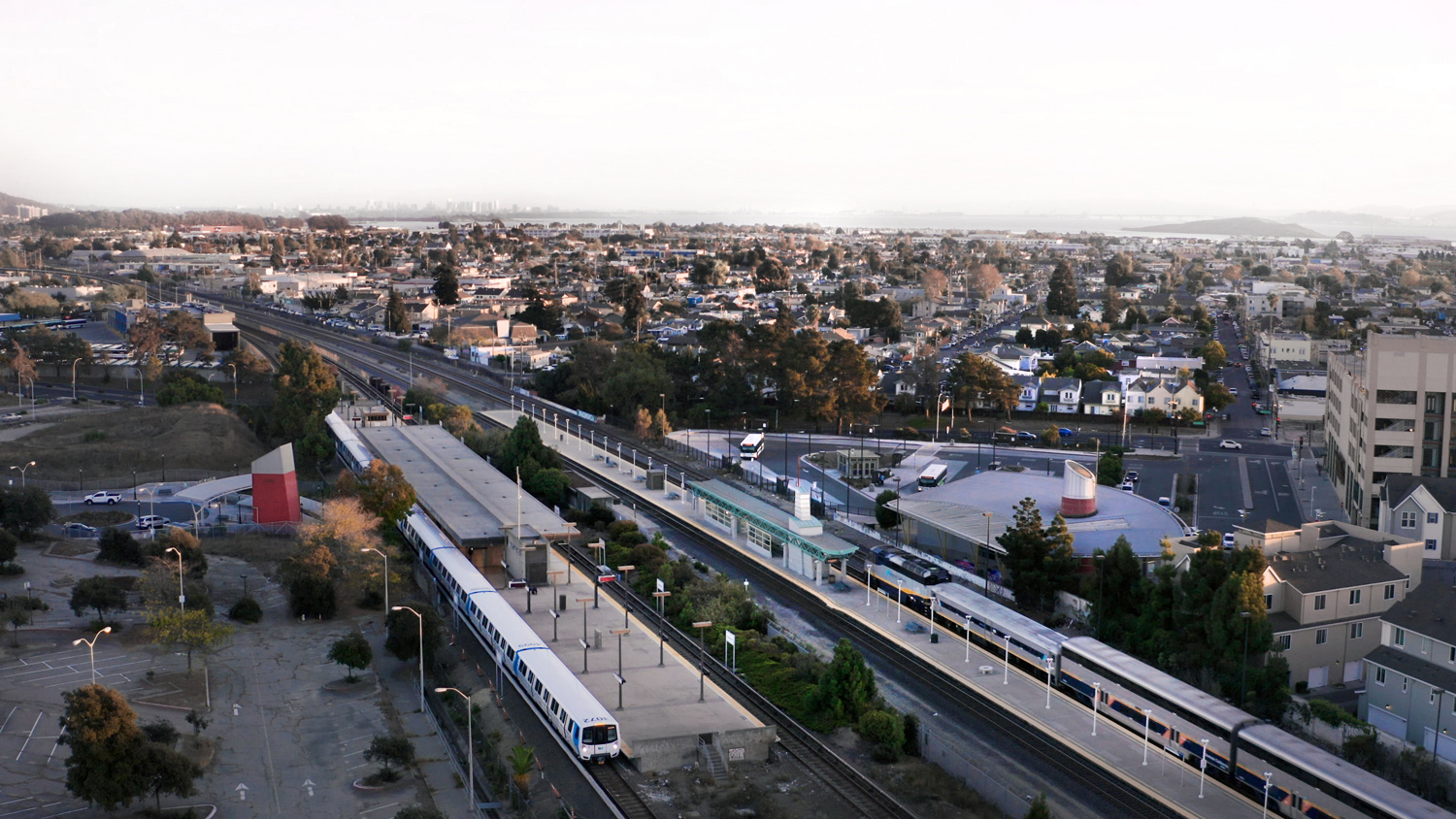
Example Service Concept for Standard-gauge (Regional Rail)
A new standard-gauge (Regional Rail) train crossing would accommodate multiple train operators (Capitol Corridor, Caltrain, CA High-Speed Rail, etc.) by offering two types of service (read more about service types below).
Urban | Metro Service

Operates in metro regions with more frequent trains (every 2-10 minutes), shorter distances between stations (1-5 miles apart), and medium average speeds. BART provides this service today and Caltrain will provide this type of service with its modern electrified trains beginning in 2024.
Intercity | Express Service

Operates in urban and rural communities with less frequent trains (every 30 minutes-1 hour+), longer distances between stations (5+ miles apart), and higher average speeds. Operators like Capitol Corridor, Amtrak, San Joaquins, Altamont Corridor Express, and others provide this service across the Megaregion today on shared tracks mostly owned by private freight rail.
This concept – which utilizes existing rail corridors in San Francisco, the Peninsula, and the East Bay – places new track alignments underground, improves travel times, and offers more direct megaregional trips without the need for transfers.
Example Concept for Broad-gauge (BART) in Crossing
A new broad-gauge (BART) train crossing would offer improvements in one type of service by accommodating BART trains (read more about service types below).
Urban | Metro Service

Operates in metro regions with more frequent trains (every 2-10 minutes), shorter distances between stations (1-5 miles apart), and medium average speeds. BART provides this service today and Caltrain will provide this type of service with its modern electrified trains beginning in 2024.
This concept improves Urban | Metro service on existing BART lines, creates service redundancy, and supports future capacity. It utilizes existing BART corridors, places new track alignments underground, and connects to the existing BART train system in the East Bay. It includes potential new stations in San Francisco and a potential BART-Regional Rail transfer station in Oakland at Jack London Square.
Analysis Findings
A considerable amount of analysis and evaluation has taken place comparing standard-gauge (Regional Rail) and broad-gauge (BART) technologies to inform the train crossing decision. The findings demonstrate how these two distinct train technologies offer similar benefits and where they differ in what they can provide. This work, along with ongoing stakeholder and public input, will identify which train technology best meets Link21's Goals and Objectives and helps achieve the long-term vision for the greater Bay Area and Northern California, as identified in the State Rail Plan.
-
Similarities
Both technologies support equitable outcomes and improve livability and economic opportunity.
-
Differences
Both technologies differ in how they transform the passenger experience and enhance connectivity across the megaregional train network.
-
Evolving Considerations
Both technologies have considerations that include early projections for new ridership, cost estimates, and funding sources.
To review the similarities, differences, and evolving considerations click to the next slide.
Similarities — Offered by Both Technologies
Link21's analysis has shown that both standard-gauge (Regional Rail) and broad-gauge (BART) train technologies can generate similar benefits by providing equitable outcomes, improving livability, and promoting economic opportunity. Additionally, while transit crowding is not a current issue, both technologies can meet the projected future capacity needs of the Transbay corridor.
Share of Benefits
What is Justice40?
The federal government has made it a goal that 40 percent of the overall benefits of certain federal climate, clean energy, affordable and sustainable housing, and other investments flow to disadvantaged communities that are marginalized by underinvestment and overburdened by pollution. Justice40 is a federal program that includes investments in climate change, clean energy/energy efficiency, clean transit, affordable/sustainable housing, training/workforce development, remediation/reduction of legacy pollution, and development of clean water/wastewater infrastructure.
Both train technologies provide a majority share — between 50-63% — of their benefits to priority populations, including enhanced access to community resources, jobs, and new trips for low-income households. This is a huge achievement, as both technologies' majority benefit shares comfortably exceed the federal Justice40 requirement of 40% of benefits going to priority populations. Even though both technologies would provide a similar scale of these benefits, broad-gauge benefits are largely within the existing BART service area, while standard-gauge would provide benefits to priority populations across the Megaregion.
Access within 1/2 Mile of Stations
Both technologies increase the number of people located within a half mile of stations. For standard-gauge, 37,000 more people have access to Urban | Metro rail service, 10,000 of which are priority populations. For broad-gauge, 28,000 more people have access to Urban | Metro rail service, 12,000 of which are priority populations.
Access to Jobs within 1 Hour Commute
With either technology in the crossing, more jobs can be reached within a 1 hour commute, generating access to approximately:
- 45,000 more jobs for the average person
- 80,000 more jobs for the average person within priority population areas
Differences — Transforming the Passenger Experience & Future Rail Network
Our analysis findings demonstrate that each train technology offers different outcomes specific to how they transform the passenger experience and enhance the future megaregional train system. Click below to explore trade-offs of both technologies and learn how they will improve connectivity, reduce travel time, enhance train operations and service redundancy, and amplify benefits of planned rail projects.
Megaregional Connectivity
Trade-off
Standard-gauge (Regional Rail) connects megaregional destinations and improves both local and regional travel by bringing Urban | Metro service to stations that only have Intercity | Express service today.
Broad-gauge (BART) primarily serves local and regional travel by enhancing the existing BART Urban | Metro service to existing markets but has a limited impact on megaregional travel.
A critical difference in standard-gauge (Regional Rail) and broad-gauge (BART) train technologies is their ability to provide megaregional connectivity, which is one of the challenges Link21 seeks to address. Most importantly, megaregional connectivity has been one of the most consistently mentioned benefits that the public wishes to see from the Program. While both technologies greatly increase the number of new direct connections (or one-seat rides) between destinations, they each provide very different benefits.
System-wide
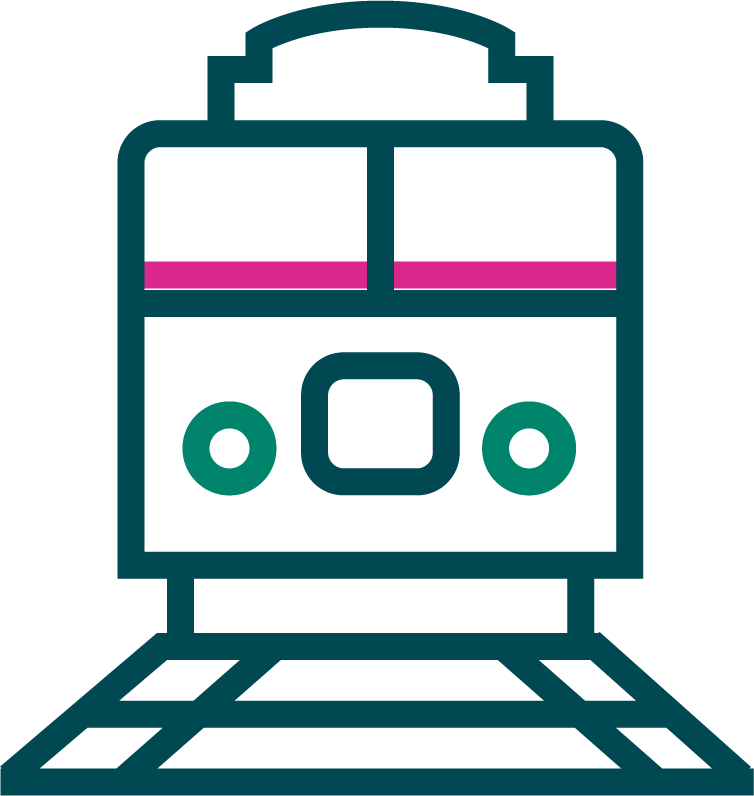 Standard-gauge (Regional Rail)
Standard-gauge (Regional Rail)
- 370 New direct connections
- 1,120 New one-transfer station pairs
 Broad-gauge (BART)
Broad-gauge (BART)
- 290 New direct connections
- 720 New one-transfer station pairs
Example Trip
An example trip between Sacramento and San Francisco would be direct with standard-gauge (Regional Rail) in the crossing as compared to the same trip with broad-gauge (BART) in the crossing requiring a transfer between train systems.
Travel Time Savings
Trade-off
Standard-gauge (Regional Rail) improves travel time significantly along existing rail corridors for long distance trips within the Megaregion and for medium distance trips between the inner East Bay and the Peninsula. As an example, riders can save 45 minutes each direction when traveling between Emeryville and Redwood City to gain one hour and a half back into their day.
Broad-gauge (BART) improves travel times by reducing wait times for most East Bay BART stations because of greater train frequencies. It provides the opportunity to improve travel time by 10 minutes each way when traveling between Fremont and Mission Bay — a potential new market that could be served with a second crossing.
A new crossing with Link21 will save travel time and give riders time back in their day to do what they want to do.
Example Trip
There are a number of sample trips shown that demonstrate travel time savings possible with each train technology.
| Type of Rail | Sacramento to San Francisco | Fremont to Mission Bay | Emeryville to Redwood City |
|---|---|---|---|
|
|
22 Minute savings | 00 Minute savings | 45 Minute savings |
|
|
6 Minute savings | 20 Minute savings | 15 Minute savings |
Interoperability
Trade-off
Standard-gauge (Regional Rail) would allow multiple service operators to potentially use the new crossing to cross the Bay for the first time, such as Capitol Corridor, Caltrain, San Joaquins, and CA High-Speed Rail. This potential for interoperability would create a more integrated train system, and have a great impact on connectivity throughout the Megaregion.
Broad-gauge (BART) would only be utilized by BART, improving service to riders within the existing BART train system in the East Bay, and would focus on more localized system improvements. This crossing would also provide additional redundancy for the Oakland Wye section of track that impacts passenger train service.
The Portal Project (also known as the Downtown Rail Extension) will extend Caltrain and future California High-Speed Rail service from the existing 4th and King railyard to the Salesforce Transit Center. From here, these operators could potentially use a standard-gauge crossing to cross the Bay.
Sample Project Enabling Interoperability The Portal — Downtown Rail Extension
Base Map Source: SFCTA - The PortalAmplifying Rail Investments
Trade-off
Standard-gauge (Regional Rail) would benefit the many standard-gauge projects across the Megaregion. It would capitalize on many planned rail investments, offering mutual benefits for train service, operations, and ridership. An example of creating mutual benefits with a new standard-gauge crossing can be seen in The Portal Project, which is assumed to be completed prior to a new Transbay crossing. This project is an extension of Caltrain to the Salesforce Transit Center where Link21 would connect. The addition of Link21 would increase passenger volume through the Portal by 60–70%.
Broad-gauge (BART) would benefit current and planned rail investments in BART service within the Bay Area, though there are fewer projects throughout the region that would benefit from a new broad-gauge crossing.
Partner agencies across the Megaregion are investing in rail infrastructure and service improvements to meet the evolving needs of riders and the statewide vision. Future projects would see more ridership and benefits when connected to rail services using a new Link21 train crossing.
Sample of Projects*
Shares Benefits with:
 Standard-gauge Crossing
Standard-gauge Crossing
- The Portal (to Salesforce Transit Center)
- Carquinez Rail Bridge Replacement
- Sacramento Valley Station
- Sacramento to Roseville 3rd Track
- Caltrain Electrification
- CA High-Speed Rail
- Valley Rail
- Salinas Rail Extension
- Bayview, Oakley, Hercules stations
 Broad-gauge Crossing
Broad-gauge Crossing
- BART Core Capacity
- Silicon Valley Extension (Phase 2)
- Valley Link to BART connection
 Either / Both Gauges
Either / Both Gauges
- Western S.F. Rail Extension
- San Jose Diridon Station
Considerations — To Be Further Refined
Link21 has assessed early ridership projections, high-level cost estimates, and ongoing funding opportunities. While these considerations are critical to understand, they will continue to evolve and be reassessed as the Project is defined.
Ridership Projection
Both technologies have the potential to increase future rail ridership significantly. Ridership projections depend on the configuration of station locations, alignment, and service levels. These factors differ for each technology and are variable at this early stage of the Project. Two configurations analyzed for a standard-gauge crossing generated 90,000 and 115,000 new rail trips. Two analyzed for broad-gauge generated 110,000 and 130,000 new rail trips. Ridership considerations will be used to help refine the Proposed Project, including further analysis into potential future ridership gains beyond 2050.
Funding
The different choices of technology in the crossing each indicate distinct future services the Project may provide, each of which unlock eligibility for different sources of project funding. Both technologies would be compatible with Urban | Metro service in the crossing, which aligns with Federal Transit Administration (FTA) funding. A standard-gauge crossing allows for Intercity Passenger Service, making a future Project with this technology and infrastructure eligible for Federal Railroad Administration (FRA) as well as FTA funding.
Historic Federal Funding for Intercity Passenger Rail
The landmark Bipartisan Infrastructure Law (BIL) includes over $100B for expansions and improvements to the nation's passenger rail network. Within the BIL, the Corridor Identification and Development (Corridor ID) Program establishes a process to identify intercity passenger rail corridors and projects for up to 90% FRA development funding. In December 2023, Link21 was selected for inclusion in the Corridor ID Program as part of the Capitol Corridor. Advancement through Corridor ID will position Link21 for significant federal capital funding.
Preliminary Cost Estimates
At this early planning stage (1-2% conceptual design), cost estimates are highly variable and will change as the Project is defined. Preliminary estimates find both technologies to be broadly comparable in cost for infrastructure in the crossing (between $18-$30B). The costs associated with additional infrastructure improvements for standard-gauge are generally higher ($15-$25B) than those for BART ($5-$10B), given the region's lower historic investment in the standard-gauge train system. These standard-gauge infrastructure improvements beyond the crossing would be needed to realize more benefits and create a more interconnected train system. Future work will include further focus on identifying costs alongside a more detailed Project design.
What Happens Now?
Link21 is nearing a Program milestone to determine which train technology — standard-gauge (Regional Rail) or broad-gauge (BART) — will operate in the new underground train crossing of the San Francisco Bay. This is an important step towards our goal of creating a faster, more connected train system across the 21-county Northern California Megaregion that provides equitable, affordable, and accessible travel for future generations. Following this milestone, we will focus planning on identifying a Project that can move forward into the next phase of work — Environmental Review — while working to unlock federal funding for project development.
Engagement Activities
Stay engaged in this important transportation program that will connect us to people and places, spur economic recovery, and uplift our communities.
If you have questions or would like to submit a comment, please utilize the buttons located in the top right corner.
-
Virtual Community Meetings
June 6 & 10, 6-7:30 pm -
Online Open House
Available from June 14 through July 19, 2024. -
Continued In-Station/Community Tabling
Visit Link21 Events webpage for select locations -
Ongoing Community Stakeholder Coordination
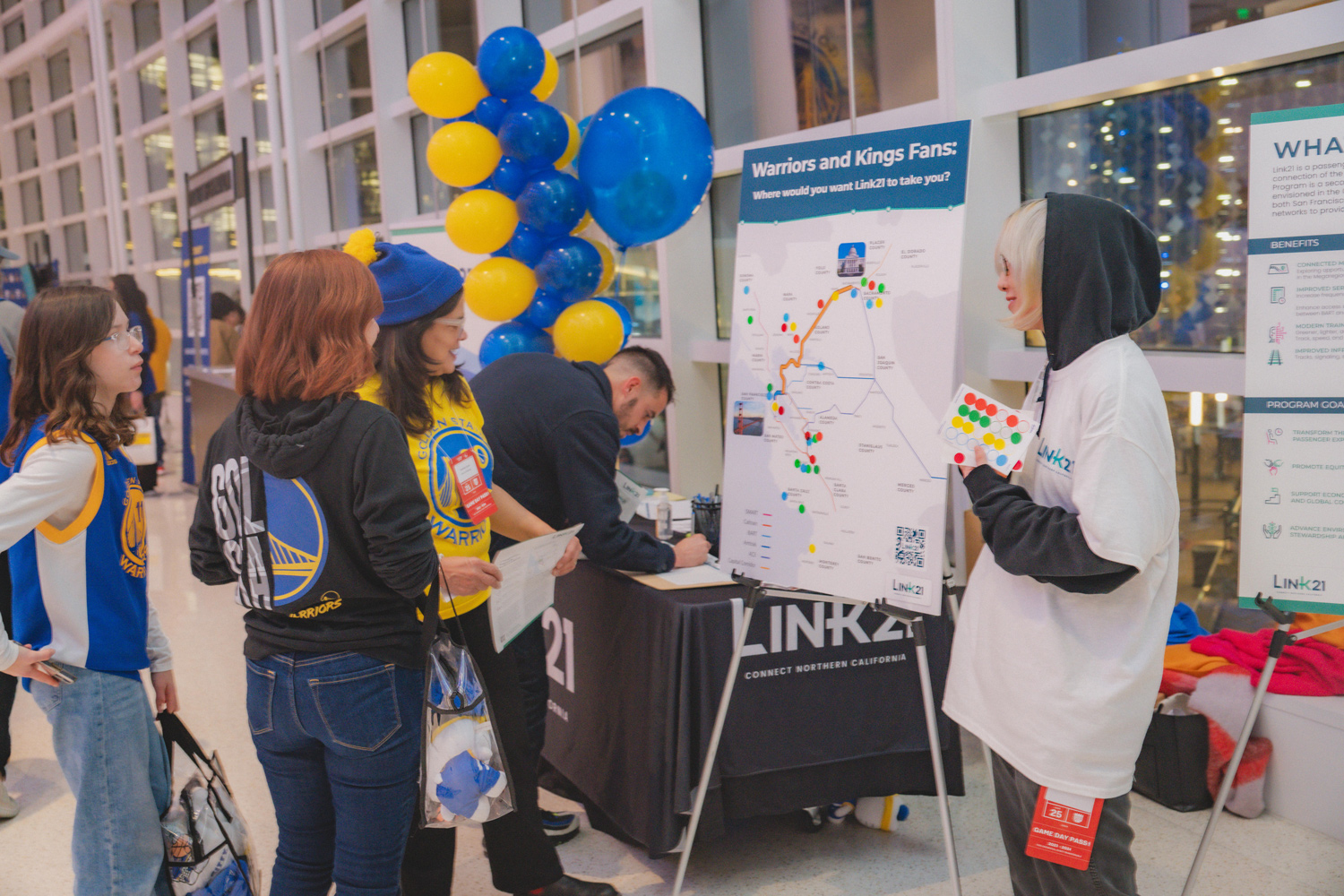 Link21 Team engaging with fans at the Golden State Warriors vs. Sacramento Kings game at Chase Center in San Francisco
Link21 Team engaging with fans at the Golden State Warriors vs. Sacramento Kings game at Chase Center in San Francisco
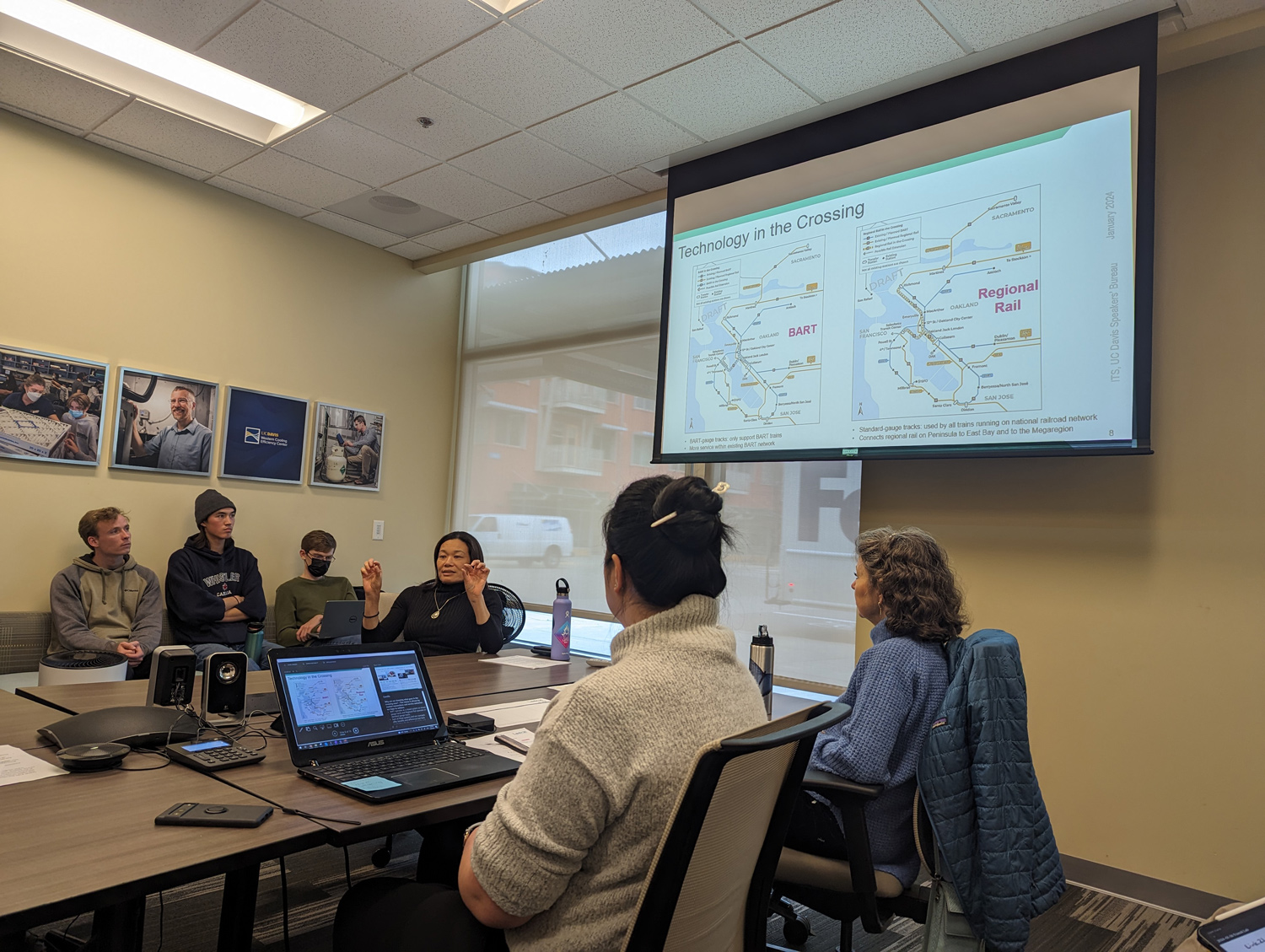 Link21 Team presenting to Transit Lab Students at University of California, Davis
Link21 Team presenting to Transit Lab Students at University of California, Davis
